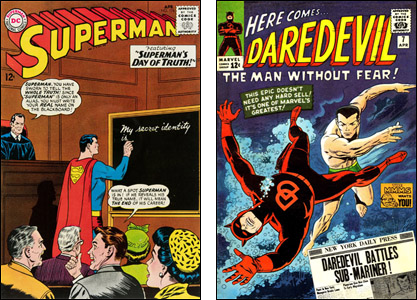From Steve Aldred comes this question…
I do have a question for you that I hope you can answer, it relates in a way to the question a few weeks back about Joe Kubert's covers for Jack Kirby's final Kamandi issues after he returned to Marvel. When Jack Kirby came back to Marvel in the mid 70's he was soon doing a lot of covers for them across most of their superhero titles.
Was this simply to let the wider Marvel readership know that Kirby was back at the company or was there another reason for it? As with Kubert's Kamandi covers, I never thought that they were the best of Kirby's work especially where he had been asked to draw some of the newer characters that he was obviously not familiar with.
Marvel had Jack doing covers because the folks in charge then — and this would have included Stan — felt that Jack was their best choice for the job. Simple as that. He did not design most of them. In most cases, he was given a sketch that had been generated in the office and approved there…something drawn by Marie Severin, Dave Cockrum, Al Milgrom or one of about a half-dozen others. When a cover featured characters that Jack didn't know, they'd send him reference — or at least, they were supposed to. He told me that often, the reference material was insufficient or missing altogether. And they were almost never for stories he knew.
I agree with you that these were not the best Kirby work. My admiration for Jack's skills is huge but I don't think he drew many memorable covers after about late 1967 when Marvel increasingly began giving him roughs by other artists. This was not long after Carmine Infantino took over as the guy in charge of covers at DC. Previously, each DC editor had supervised the designs for his or her comics, usually working with the artist who would do the finished art or at least, the pencils for the finished art.
There was some panic at DC around 1966 when Marvel was gaining in sales. Most of the folks in power at DC then thought the Marvel books were badly-written and badly-drawn — or at least, nowhere as good as the concurrent DC product. They had to come up with an explanation for why readers were increasingly opting for Marvel over DC and Infantino supplied one they could accept: Marvel's covers, he said, were simply more exciting.
DC's too often had the hero standing around uttering word balloons that described the premise of the story. Marvel's had the heroes in action. Here are two covers that were on newsstands in February of 1965. Which one do you think would attract more buyers?

That was why Infantino was brought into Management and assigned to design or at least supervise all their covers. In response, Marvel began having more and more covers designed in the office — this at a time when Kirby for personal reasons was trying to cut back his trips into town to the office.
So more and more, Marvel covers started with Stan Lee working with an in-house artist — most often then, Marie Severin — to generate a sketch that would be finished (usually) by someone else. As good an artist as Jack was, I don't think you got the best out of him by having him draw a cover that someone else had laid out…especially a cover for a story he hadn't read and in which he had no emotional involvement.
What he handed in was always workmanlike and professional but he just didn't have the same level of inspiration even when it was for a comic where he'd written and drawn the insides. Even in those cases, he usually drew the cover long after he'd finished the story and it had left his mind. Jack was always about the story he was doing now.
Also, I think that at the time — and this had nothing to do with Jack — comic book covers from most publishers were getting too cluttered with word balloons and blurbs and story titles and logos that distracted from the art instead of enhancing it. I don't recall many exciting covers by anyone in the mid-to-late seventies, a topic we've discussed at those "Cover Story" panels I moderate at comic conventions. As my amigo Sergio Aragonés has said, "If you need to put a lot of words on a cover, it's not a very good cover."
But I agree with you: I don't think Jack's covers during the period we're discussing were him at his best.
